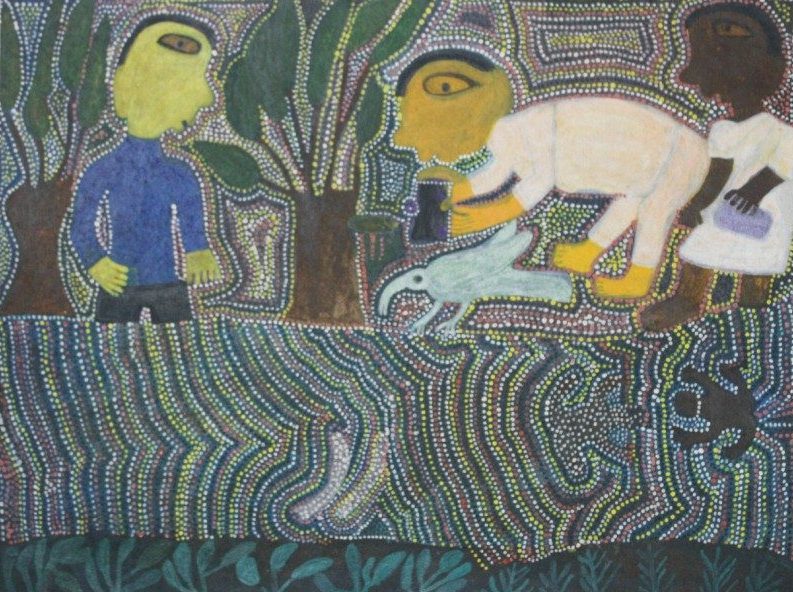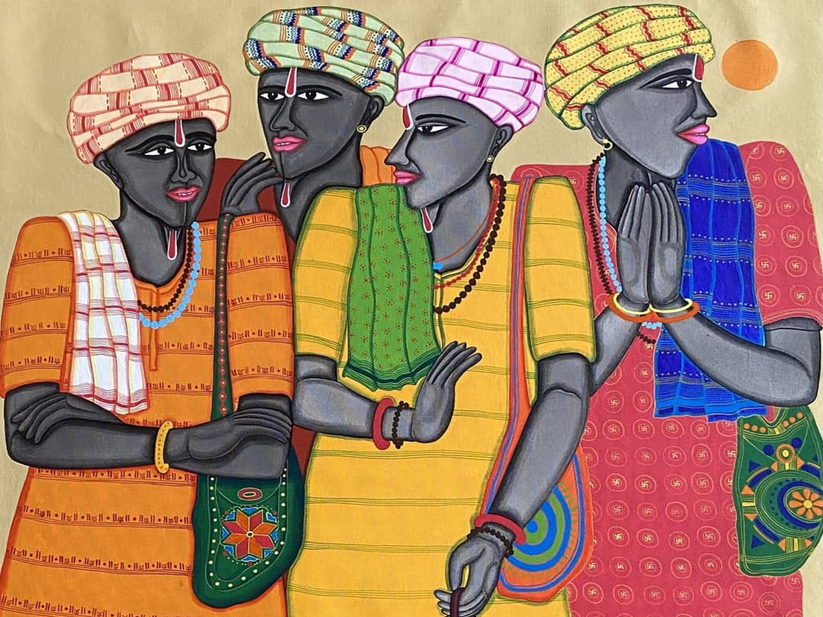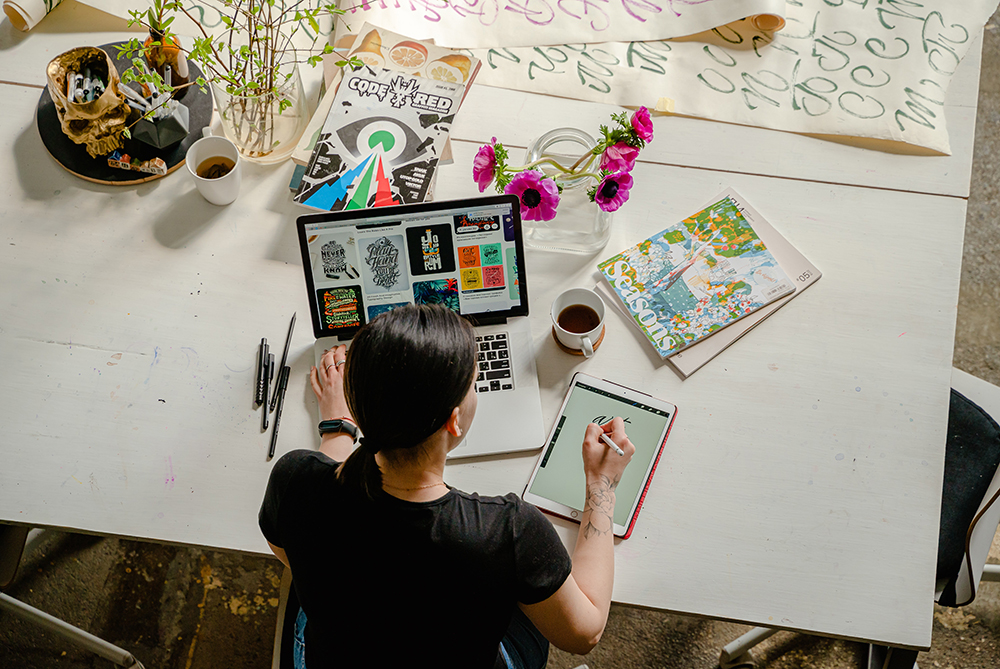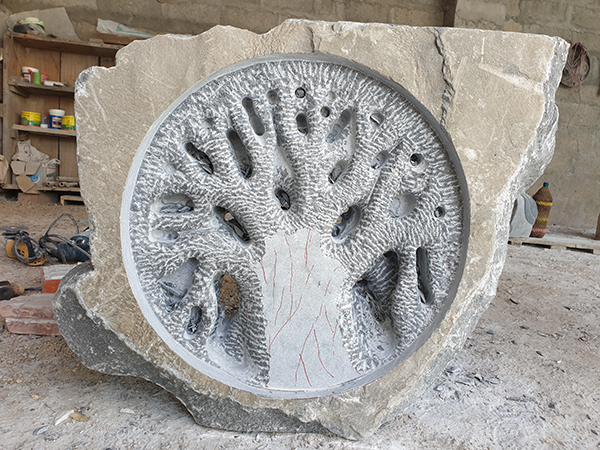Abir Pothi traces the stories of two artists from the hinterlands of Chhattisgarh who have been creating dialogue over the invasion of land, water and forests and the very mechanisms through which it violently takes place.
Artists Rajkumar Korram and Shantibai articulate their thoughts through the essential constituents of their world, Jal (water), Jungle (forest), and Zameen (land) in this latest series of paintings exhibited at The Guild, Mumbai. Both inherit a deep association with nature. These paintings created during the pandemic period, on one hand, chronicle the daily life and lived experiences of the ordinary citizens who are away from the urban centres, as they make sense of the unprecedented pause brought by it. On the other, they make us revisit the endearing biosphere through the lens of the pandemic as the ongoing crisis has forced us to relook at the human-nature relationship.
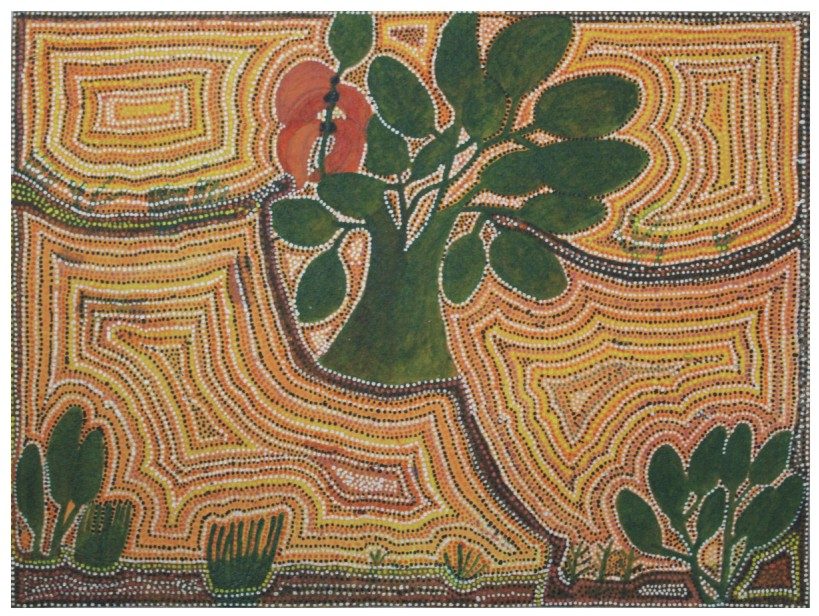
Rajkumar and Shantibai, in their careers spanning over two decades, have been deploying the techniques, tools and language of indigenous artistic expressions with newer aesthetics in order to create a contemporary expression that speaks to the tribal and non-tribal worlds alike. They have been working together as members of the Dialogue Interactive Artists Association, an artist-run organization in Kopaweda of the Kondagaon district in Chhattisgarh. Rajkumar has presented a set of ten watercolour paintings while Shantibai has furnished 20 for the exhibition.
Their earlier bodies of works have strongly responded to the social struggles and atrocities experienced by the marginalized communities around them. In these sets of paintings, there is an inward shift to the artists’ gaze. The invasion of land, water and forests and the very mechanisms through which it violently takes place – be it the mining industry, the construction of dams, the eradication of forests and ecosystems, or the mere presence of giant machines, or the confrontation between the state machinery and the native citizens. All are portrayed as a backdrop to the daily lives of the humble people whose lives are knitted around the land, water, hills, and forests. These autobiographical pictorial essays form an important archive of the pandemic period.
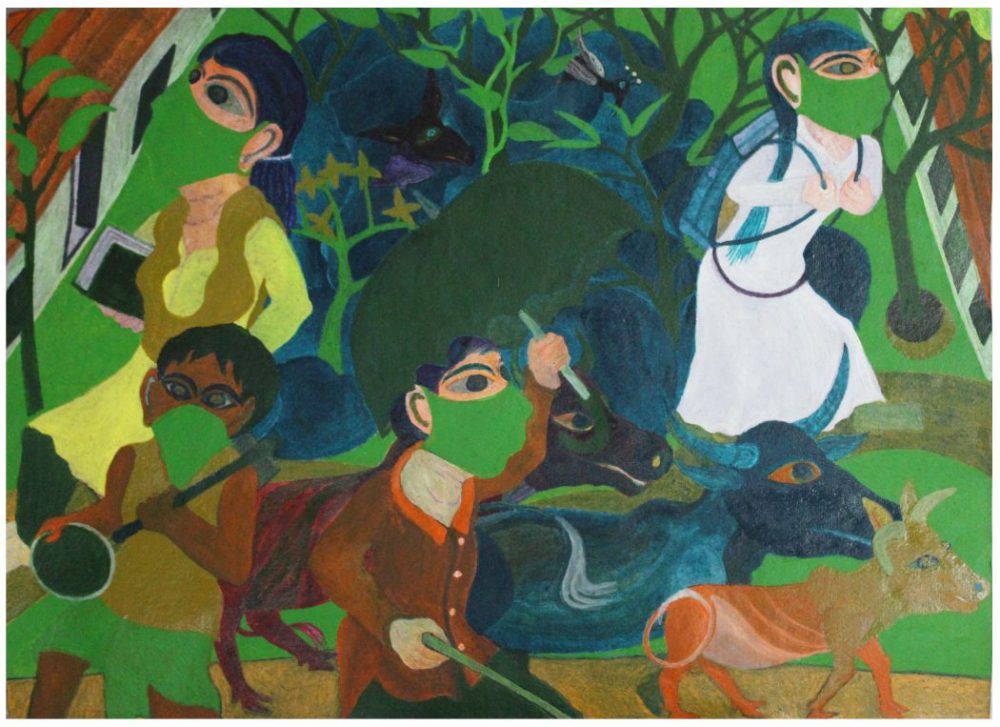
The Guild was established in 1997 with an aim to function as a semi-institutional space within the bustling art-hub of Mumbai, India. Since its inception, it has been providing a platform for discursive practices, innovation and experimentation in contemporary art. The Guild has been recognized as a pioneering gallery with its important roster of artists of diverse generations who have brought in robust dialogue within and across the disciplines. It believes in promoting critical ideas and artists who are engaged in cutting-edge practices in distinctive mediums reflecting diverse perspectives.
The Gallery has held major retrospectives of important artists: Sudhir Patwardhan, Navjot Altaf and G. R. Iranna. It has collaborated with premier national art centres and has been promoting its artists to various international cultural institutions, art fairs through exhibitions, residencies and workshops. A solo exhibition of photographs and drawings by eminent modernist artist Akbar Padamsee (1928-2020) is also currently on display at The Guild’s Alibaug Gallery. Titled ‘Searching for the present, where? Being – becoming in Akbar Padamsee’s figurations (1995 – 2006), it is curated by Dr. Srajana Kaikini.



